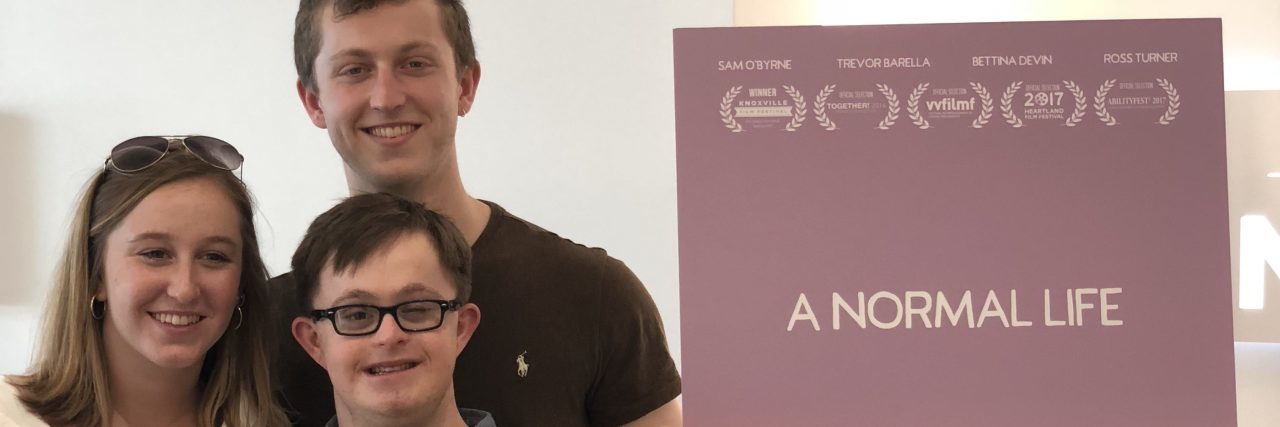“Normal” is such a loaded term. It’s the kind of word we use way too often without thinking about its implications. “Normal” connotes some sort of unwritten standard that something — be it a person or an object or a place — must adhere to in order to be considered acceptable. “Normal” means whatever we have experienced and what we are comfortable with. For me, that means living with a younger brother with Down syndrome. For most people, that is not the case, so it is understandable to me why they place my experience outside their preconceived boundaries of “acceptable.”
I set out to make “A Normal Life” because I wanted the world to know about what it was like to live with a sibling with Down syndrome. I wanted the audience to really experience it first hand from somebody who had actually lived it. So often, we are presented with people with disabilities in film who are either second hand fodder or there for comical effect. They often strike me as caricatures rather than characters, lacking the emotional depth and humanity their real-world counterparts possess.
I wanted the world to know that my little brother is, in essence, just like any other little brother. We have fun together, we fight incessantly, we play sports and watch TV and go to the movies and hang out with our mutual friends. Our story isn’t exactly like everyone else’s, but then again, neither is anyone’s. Down syndrome is not inherently bad; it’s not inherently anything. It’s just a different way of living. A different way of being “normal.”
When I first started work on the film, I had it in mind that my brother, Griffin, was going to play the lead role of Nathan. However, a quick scene test revealed that while he had the acting chops, he wasn’t very inclined to listen to his older brother bossing him around all day. So the search began for another young actor with Down syndrome to play the role. I reached out to a few local organizations and within a week, I received an outpouring of responses from parents all over Northern California. In all, I got about eight audition tapes, all from amazingly talented young men and boys. I ultimately found who I was looking for in Trevor Barella, who reminded me of Griffin from the first time I met him. During one read-through in particular, a scene in which the two brothers say their goodbyes, Trevor rested his head on the other actor’s chest and began to fake cry. When I looked over at my casting director and saw that we were both in tears, I knew we had our Nathan.
Among the messages I got from my casting call, a handful were from parents with kids who were too young or too old for the role, yet felt compelled to reach out regardless. Many were grateful that someone was finally making an attempt to show just how typical life could be with a family member with a disability. I believe a big fear for some family members is that others don’t and can’t understand what their lives are really like, so hearing about this film must have brought a feeling of validation to them and their story. As one mother wrote: “People like you are the reason that I — and the other 5,000 or so moms who will give birth to a child with Down syndrome this year — have hope. You’re the reason we go forward with the pregnancy. You’re the reason we believe in what’s possible for our kids. Not all the reason, but such a huge part of it. And it means the world to us.”
I didn’t expect responses like these, and it was an incredibly humbling experience for me, both as an artist and as an advocate for people with disabilities. To know that my film, that Griffin’s story, has changed someone’s life for the better even a little bit made all the hard work worthwhile. I’m proud to have made this movie, and prouder still that it has found a place out there for the world to see. If you get the chance to watch it, please let me know. I hope it makes you feel like your voice is being heard, and that your “normal” is something we can all understand.
“A Normal Life” is available now on Amazon Prime. Click here to watch the film.
Learn more at www.alexherz.com.

